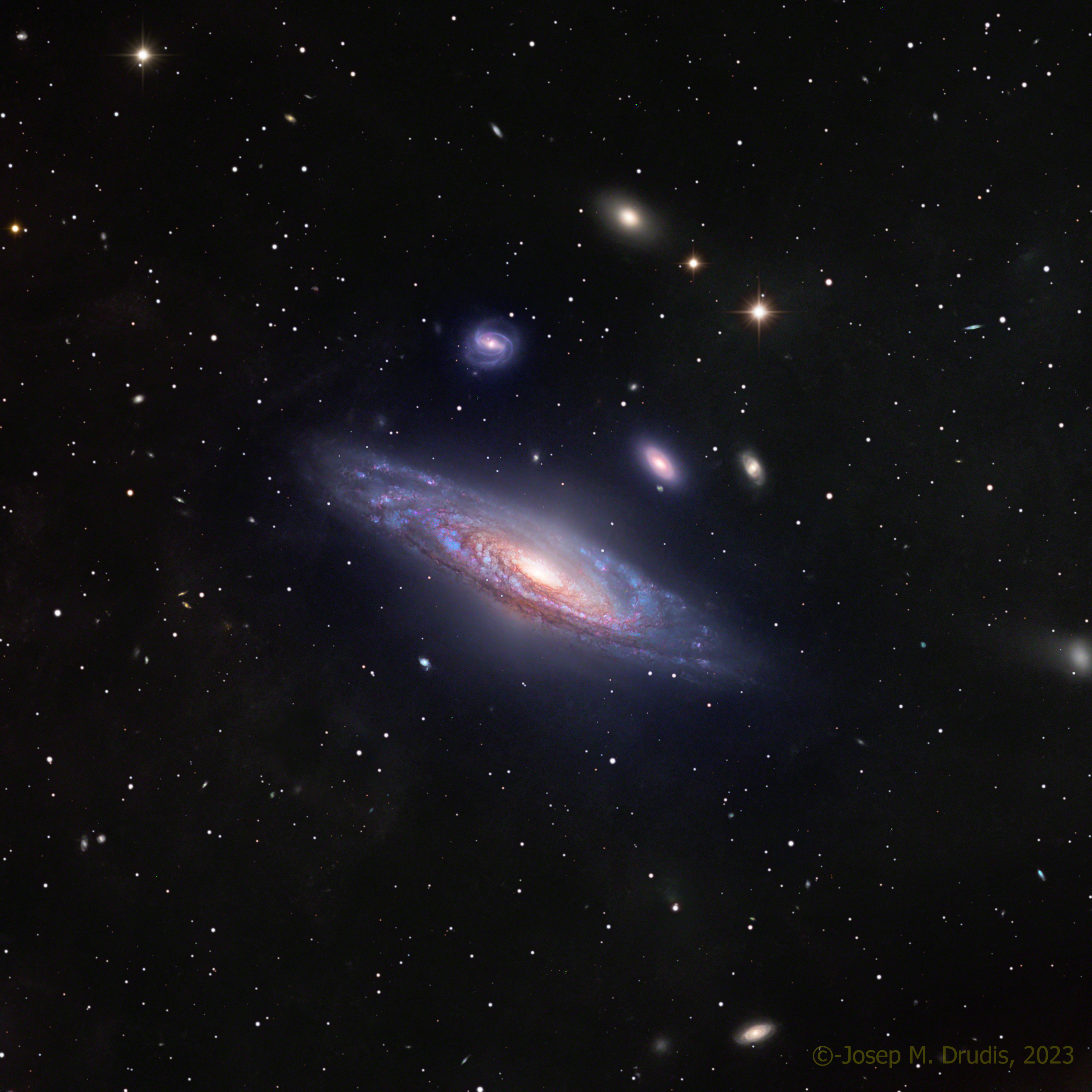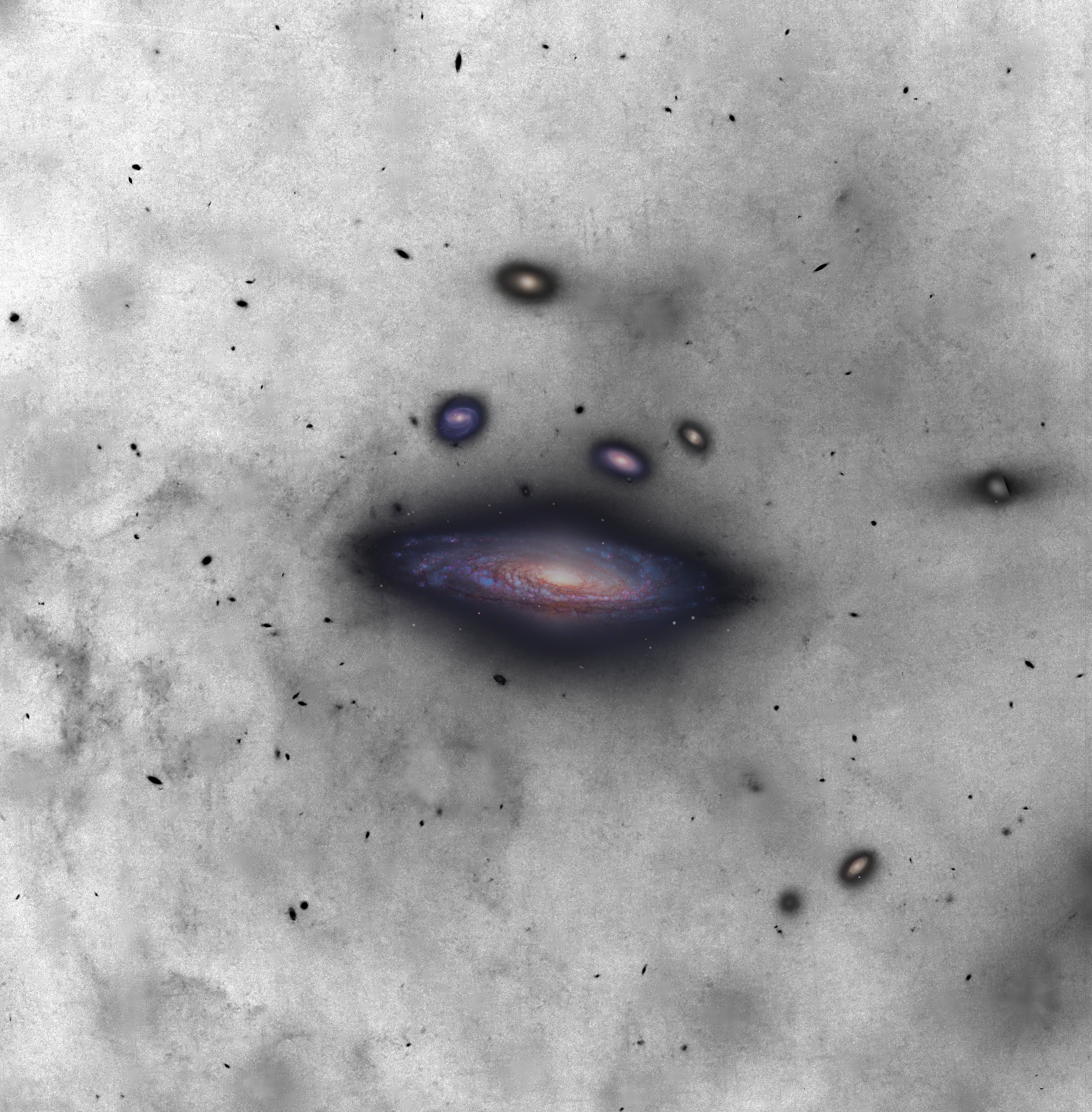Click on the image for a full resolution version
 See this image also on Instagram
See this image also on Instagram
NGC 7331, is a spiral galaxy located in the constellation Pegasus. First observed by William Herschel in 1784, this galaxy has been named sometimes “The Milky Way’s Twin” due to some similarity to our own galaxy. Anyhow, this galaxy has no bar, it is flocculent and has a few star streams around it, when closely compared to the Milky Way.
Situated approximately 40 million light-years away, NGC 7331 is a large and luminous spiral galaxy with a well-defined central bulge, spiral arms, and a discernible galactic disk. NGC 7331’s spiral arms are interspersed with patches of dark dust lanes, where new stars are actively forming. Observations of this galaxy have revealed a multitude of stellar clusters and nebulae within these arms, contributing to the ongoing narrative of star birth and evolution. Additionally, the galaxy’s central region harbors a compact and active nucleus, suggesting the presence of a supermassive black hole.
D. Zakharova et al. in a paper published in 2023, studied some barless galaxies, NGC 7331 among them, and reached the conclusions that this galaxy has about half of the dark matter that would be expected that the origin of the barless nucleus region is thought to be due to this galaxy being originated from an unstable state.
The area surrounding NGC 7331 is rich in IFN (Integrated Flux Nebulae), that can be better seen in the heavily stretched inverted image below. The stars have been removed to better show the myriad of background galaxies in the area.
Additional Information
Object
Name(s): NGC 7331. Caldwell 30
Type: Spiral galaxy Type SAb
RA: 22h 37m 05s
Dec: +34º 28’ 10”
Constellation: Pegasus
Size (arcmin): 10.5 x 3.7 arcmin
Magnitude: +10.4
Distance: 40 Mly
Image
Date: 2021-11-02 to 2021-11-07
Location: Curiosity2 Observatory, New Mexico Skies, Mayhill, NM, USA
Size (arcmin): 24 x 24 arcmin
Telescope: 24” (61 cm) f/6.5 Reflector
Camera: FLI PL16803 (4096x4096pix)
Guiding: Astrodon MonsterMOAG off-axis guider
Total exposure: 18h 50m (L: 11h 20m; RGB: 7h 30m)
Processing: CCDStack, PixInsight (one step) and Photoshop CC 2023

